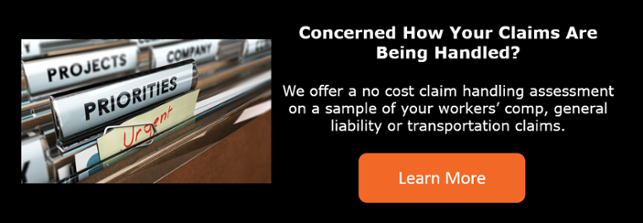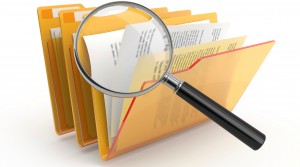
Have you ever worked on a claim and had the feeling the estimate for repairs is too high, or inflated? We have dealt with this situation many times during the claim handling process for truck damage. Unfortunately, it occurs all too often. The vehicle owner may ask the repair shop to add items that are not related to the loss or increase the labor hours to obtain additional monies to assist the owner with their deductible or cash out.
According to the National Highway Traffic Safety Administration (NHTSA), the average cost of a commercial truck accident is $59,150. This is significantly more than the average cost of a personal auto claim. Therefore, it’s important to have an experienced and reliable heavy equipment adjuster working for you. These adjusters should be able to tell when an estimate feels a little bit out of range. Most adjusters will become familiar with repair shops and are knowledgeable of repair time and pricing of parts.
$6,000 Difference in Estimates
Our heavy equipment adjuster, Dick, has worked with us for several years. He was working on a transportation claim and had some doubts regarding an independent estimate. We requested that Dick conduct a desk review of the independent estimate versus his estimate. Dick’s estimate was $6,000 less than our competitor’s, leading us to believe there was some padding in their estimate. Upon further review, it was determined that the estimate for labor hours was more than the reasonable amount. We notified the claimant’s insurance carrier that their estimate was higher than ours, and we would not pay for certain items unless they could prove that their estimate was valid.
 Reasons for Inflated Estimates
Reasons for Inflated Estimates
There are many reasons for inflated estimates. Some are honest mistakes, others are due to lack of experience on the adjuster’s part, and unfortunately, some can be fraudulent.
Honest mistakes are made every day and can be as simple as an adjuster not checking what is covered in the policy before agreeing to an estimate.
When it comes to a lack of experience, many times an adjuster who is billed as a “heavy equipment adjuster” is just a personal auto adjuster who has no background or training in heavy equipment claims. In a prior article titled “4 Quick Tips About Heavy Equipment Appraising”, we discussed the importance of having a well trained adjuster who is experienced in dealing with heavy equipment claims.
#1 OEM Parts Versus AM Parts
Check the policy holder’s policy. Does it cover OEM (Original Equipment Manufacturer) or AM (After-market) parts? This could cause a big difference in the repair estimate. In a separate claim, Dick reviewed a repair estimate, and the shop included OEM parts when the policy didn’t include it in coverage. This raised the amount of the estimate considerably. The vehicle owner was notified that if he wanted OEM, he would have to pay the difference.
This could be an example of an honest mistake, or someone knowingly quoting OEM parts. Depending on what the damage is, OEM parts can help retain the value of a vehicle involved in an accident.
#2 Prior Damage
If the vehicle was in a prior accident, and it wasn’t fixed, be sure the estimate covers repairs to only this accident, and nothing else. A well-qualified adjuster will be able to tell if there was any prior damage done to the vehicle.
Adjusters are well trained to determine if there was pre-existing damage to the vehicle. Some of the signs are rust, mold, or if the area had been sanded.
#3 Unnecessary Repairs and Overcharging
Be sure the estimate is for the repair due to the accident only, and nothing else. You may sometimes see repairs on the estimate that are not necessary. We had a claim recently where there was damage to the left front quarter of the truck. The estimate for repair included a new windshield. Upon review of the estimate, it was determined that the windshield wasn’t damaged, and therefore unnecessary.
An experienced adjuster will have an idea of how long a certain repair will take in labor hours, and will know if the estimate is padded. The factory publishes estimated times for repairs as well as prices for parts. Don’t let the repair shop charge more for a part than what is published.
This can be an honest mistake, lack of experience or fraud.
#4 Is the Vehicle Owner Working Together with the Shop?
Sometimes the vehicle owner and shop will work together and raise the estimate for various reasons. Some claimants believe that their insurance company is going to cut the estimate by some percentage to save money, so they must inflate the estimate. When this happens, it’s usually done to cover the vehicle owner’s deductible. The vehicle owner may be friends with or related to the shop owner, and the padded cost could be a cut back for the two of them.
If you suspect this is happening, your best option is to get SIU involved right away. This is insurance fraud that insurance carriers take very seriously.
Conclusion
It’s important to have an experienced heavy equipment adjuster in the field. Adjusters forge relationships and build trust with the repair shops so that they won’t be taken advantage of. They can find the most reputable repair shops, and work with them to come to an agreed price for repairs that benefit both the insurance company and claimant.





